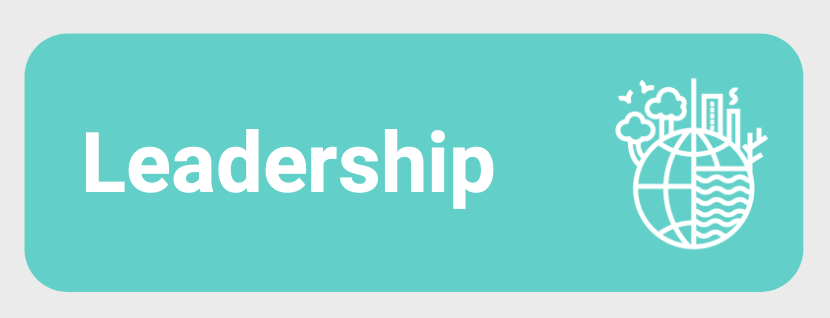The Paris Agreement signed in 2015 detailed the importance of working together around the globe to reduce greenhouse gas emissions by 2030, arriving at net zero emissions by 2050. Science has been clear, highlighting over the last few years, the urgency at which we must all work together to achieve this goal if we wish to reduce the negative effects of global warming. Although the theme is always heavily weighted on environmental issues, recent events such as COP27, COVID, and some geopolitical tensions have shifted the way we look at global collaboration, slowly emphasizing the role of S and G in ESG.
Governance has definitely taken a higher stance on the issues, the Paris agreement being the common catalyst for other countries to jump on the bandwagon, but more particularly, the real estate industry has played a big and important role when it comes to the “G”. With increasing regulations that urge lead players to consider the way they consume energy, investors are now faced with challenges if they choose not to be compliant with transparency reports.
Today, the value of assets heavily relies on proper reporting and low ESG scores. Some of these regulations include the SFDR, CSRD, Tertiary Decree in France, and the EU taxonomy (to name a few). Since COP27 in Egypt and the second part of the CBD COP15 on biodiversity in Canada, we are seeing a shift in priorities, becoming more considerate of the social issues that may hinder the success of the environmental goals initially described. By properly highlighting the underlying social issues, there is hope that mitigating climate change will become that much more realistic, one of the solutions being the adoption of a DEI (Diversity, equity, inclusivity) framework.
What is DEI?
Extreme weather and natural disasters of all types have become an everyday reality. In order to succeed in decreasing temperatures by 2C, working together on immediate actions and raising expectations is an absolute must. This includes relying specifically on those in a position to mitigate and does so by leading by example. One of the major advances has been finding the necessary finances to meet the needs of developing countries and enhance resilience in the most vulnerable communities. The conversation here is that of adopting a DEI (diversity, equity & inclusion) framework in all industries, in efforts to mitigate climate change.
Read more: Climate risk challenges on the rise: considerations to evaluate your resilience level
What exactly does that mean?



(Gender) Diversity
The negative impacts of climate change have been shown to correlate to existing geopolitical tensions, highly affecting women and girls in more vulnerable countries that lack supporting resources. For example, some rural villages in Yemen, Iraq, and Syria have experienced intense droughts in the past few years due to the climate crisis. In response, women and girls responsible for carting water in communities that don’t have access to clean water nearby, cause some to potentially risk their lives by traveling further from home to find water. The damage includes missing out on education or traveling all the way to urban cities during dangerous political tensions that could lead to higher rates of violent or sexual assaults.
Marketa Simkova, Partner and Head of People and Change at KPMG, says that “50% of the improvement in food security in developing countries came from promoting women empowerment programs in the last decade. This tells that women have a hand in being a force of change”. Considering how different genders are affected by climate change (especially in countries that are particularly vulnerable), increases the success of ESG strategies because it includes the depth that a DEI framework provides.
According to Jessica Robinson, MENA Sustainable Finance Leader at EY-Parthenonin, “Integrating gender into investment decision-making improves economic opportunities and contributes to securing the social well-being of women and girls”. With solutions that take into account gender differences, we can ensure to come closer to a solution that can be maintained by everyone across the globe.
Read also: Building gender parity in real estate: where do we stand?
Antonio Marquez is the main and managing partner of Comunidad Partners, a firm in the USA made of 100% women and minorities, and is only one example of a leader who understands that cultural diversity is key. Anna Dunkley, operations manager at Mayfair Capital, the UK branch of Swiss Life Asset Managers, says firms must step up their game to include diversity not only for regulation purposes but for change purposes; she says. “Historically, women are the ones who have done all the administration tasks. It’s about making sure that there is a clear career progression and that line managers are trained. The role of the line manager has changed dramatically, particularly since COVID. Gone are the days of delegation. Line managers are now perceived more as mentors“.
Diversity in Real Estate
Diversity plays an important role in today’s future. As globalization continues to increase, ignoring community diversity and diverse needs would come at a huge disadvantage for any corporation, as well as in real estate. By looking closer at the role it plays, we can decipher the importance of considering diversity in the social aspect of any ESG strategy.
Mike Vein, eXp World Holdings’ executive vice president of people, has implemented deliberate changes in the company to increase non-bias training. He says that “Diversity and inclusion really generate quite a bit of difference in ideas. It helps us expand our horizons,”. A Study by Cloverpop, “Analyzed around 600 business decisions made by 200 teams, across a range of companies. Researchers found that when diverse teams (of three or more people) made a business decision, they outperformed individual decision-makers up to 87% of the time. Diverse teams were also shown to make decisions faster than individual workers, and benefited from a 60% improvement in decision making.” This outcome echoes Vein’s statement, showing that taking into account the importance of diversifying could be both a financial benefit as well as a social one – everybody wins.
Historically, real estate has always been an indicator of success, wealth and expansion around the world. Working with different communities and collaborating with diverse people allows for decisions to reflect the point to which real estate has come today. Individuals are no longer investing only in local properties. As real estate players begin to look for ways to expand their businesses across the horizon, it will become even more important to consider diversifying teams.
Equity
Diversity and Inclusion are important lenses to look through when addressing real and valid solutions for the reduction of GHG emissions. In order to ensure the global goal is reached, we must all work together – meaning, we must all equip ourselves or help those in need obtain the resources needed to make this a collective effort. This is why social equity is equally important to diversity and inclusion. The loss and damage fund for vulnerable countries made in collaboration with UNFCC demonstrated the intentions behind the initiatives taken at the COP27 conference.
By recognizing the critical role developing countries play in successfully mitigating climate change, the proper measures can be taken to ensure their participation in the future. The fund is the first step towards a more inclusive adaptation method. Egyptian President Abdel Fattah El-Sisi stated that he believes “COP27 is an opportunity to showcase unity against an existential threat that we can only overcome through concerted action and effective implementation”. It’s thus pertinent for lawmakers to consider adequate financial support for developing countries to best achieve the goals set out by the Paris Agreement – especially in Africa, LDCs, and SIDS.
The next steps are to prioritize the social equity existing in the following actions: (1) finding proactive and relevant adaptation methods that take into account where developing countries are on their ESG journey, and (2) considering the effects of the current climatic events on certain vulnerable communities. The agreements made in efforts to incorporate the DEI framework into the ESG strategies remind us all that people are at the epicentre of environmental action plans, and that solutions must include the diverse needs of communities and individuals.
The concept brought to light in the COP27 of ‘just transitions’ considered that there are deep social and governance changes needed to help more economically vulnerable countries shift from a fossil fuel dependency to more natural means. The ensuing text adopted in the COP27 of 2022, calls for countries to consider all aspects of ESG, including social and socioeconomic strategies, as we face the responsibility to mitigate climate change.
Read more: EU Green Deal: CSRD incorporated during COP27
Equity in Real Estate
The evolution of regulations to encompass more social, environmental and governance aspects, is reflective of the beliefs exhibited by current society. More and more people are searching for jobs that match their social justice beliefs. Corporate social justice refers to the responsibility of companies to prioritize the bettering of harmed or disadvantaged members of society. This means making financial decisions that will allow people from all walks of life to participate equally and fairly in corporate activities. It’s possible that the relationship between employee engagements is far more relative to social responsibility than corporate leaders are able to see on the surface.
There is a big place reserved for real estate players to invest in proper social equity measures that is beneficial for all parties. For example, ULI – LA’s Building Healthy Places Committee, has made an impactful argument for why it’s important for real estate to adopt social equity measures. Their main point is that leading with standards of inequality has proved to decrease success while investing in equality measures has positively impacted the industry in multiple ways. One of the most important concepts they suggest considering is creating healthy buildings for a healthier community. There is proof that addressing occupant health as a strategy in real estate investment can improve the value of assets by reducing operating costs, increasing employee productivity, obtaining premium rents, and increasing the value of tenants.
The real estate industry has a responsibility to consider its main driving force. Financial institutions and real estate developers should reconsider their outdated approaches to market research, risk management and financial modelling that may be affecting inequality. The evidence is there to show that proper investment in social equity benefits multiple important facets that have a positive impact on a player’s assets, such as tenant retention or increasing portfolio value. Social equity may still be a relatively new topic for most industries, but investing in social equity within communities requires the proper coordination between actors, development teams, government and community members – a worthwhile investment for a bigger and more holistic return.
Inclusion
The COP27 in Egypt was extremely important for shifting the paradigm of strategies drawn out to curb climate change from a purely environmental one to a human rights one – it specifically highlighted the needed means for developing countries attempting to contribute to global efforts. Being held in the continent of Africa was specifically symbolic of the difficulties third world countries face both with climate risks directly, as well as lacking the resources to participate in making a significant contribution to the environmental goal.
The Statement made by António Guterres, the Secretary-General, at the conclusion of COP27 in Sharm el-Sheikh summarizes the overall intention of the COP27 meeting, and the specific importance of the theme of “justice” as a collaborative act: “From the beginning, this conference has been driven by two overriding themes: justice and ambition. Justice for those on the frontlines who did so little to cause the crisis – including the victims of the recent floods in Pakistan that inundated one-third of the country”.
The recent earthquake in Turkey and Syria is just one example that highlights the importance of supporting vulnerable countries against environmentally caused issues – Syria ranking 176th out of 190 on the BTI scale (Bertelsmann Transformation Index that measures the development status of countries around the world). This is why with the materializing the necessary contribution of 100 billion USD dollars annually in climate finance for developing countries, the path towards proper adaptations of the goals set out can be inclusive of developing countries for a better chance at arriving at the global goal. He concludes, “Finally, justice and ambition require the essential voice of civil society. The most vital energy source in the world is people’s power. That is why it is so important to understand the human rights dimension of climate action”.
The second part of the UN Biodiversity Conference (Fifteenth meeting of the Conference of the Parties (COP-15) to the Convention on Biological Diversity (CBD), will see the adoption of a new framework with a global roadmap for the conservation, protection and restoration of biodiversity and ecosystems. The meeting recognizes the urgency in which global policy is needed to stabilize biodiversity losses for a better recovery of natural ecosystems. This gives the opportunity for communities to work together in hopes of building a future in harmony with nature by 2050.
Governments, the private sector, and society need to work together to find climate-friendly solutions to interact with the planet, with a special emphasis on mending the relationship with ecological communities and developing nations so as to advance in the most wholesome way possible. Inclusion means considering multiple facets that may be affected by each commercial action going forward. Giving each member of this earth a fighting chance – including nature itself – means staying cautious that our actions are considerate of not harming other cultures, as well as creating realistic avenues for those most vulnerable to still pitch in. It’s for this reason that real estate is amongst the industries faced with the task of acting responsibly, leading not only by being transparent but also by making it a point to consider all aspects of ESG, including adopting the DEI framework when it comes to the “S”.
Inclusion in Real Estate
Real estate is a business that stems from relationships, people and connections. By investing the needed time, resources and education back into people, ensuring awareness and inclusivity, corporations can unlock deeper potential. According to a study conducted by Deloitte in 2017, “Organizations with inclusive cultures are twice as likely to meet or exceed financial targets and three times as likely to be high performing. And companies are six times more likely to be innovative and agile and eight times more likely to achieve better business outcomes”. By adopting an inclusive mindset, companies can increase creativity and innovation within a team coming from multiple backgrounds.
Inclusivity can benefit performance directly and indirectly. Indirect effects from working real estate through an inclusive lens could include increasing asset value and performance by improving transparency, bettering company image, and retention benefitting talent.
Building a business, whether it be related to real estate or not, must be built on, now more than ever, inclusive principles that support all team members, providing them with equal opportunities to strive and to give back. By strategizing on the basis of proper inclusivity measures, individual team members can reach their potential, find fulfillment in their work, and use their diverse ideas and skill sets to deliver with an increased success rate – as shown in the study by Deloitte.
What’s next?
There is good news – although there’s still a long way to go for the real estate sector, more and more resources are being put in place to support the path forward. Some DEI statistics show that 92% of commercial real estate firms had DEI programs in place that made the topic of conversation a priority. Putting these strategies into practice can be a bit more difficult. Industry experts say there is a big difference between intention and success – for example;
- In the UK, the Real Estate Balance’s 2020 survey revealed that between 2016 and 2020, women represented approximately 40% of the workforce in the real estate industry for graduate entry level to middle managers, but the number for senior level positions dropped dramatically.
- In Europe, 43% of commercial real estate firms had professionals dedicated solely to DEI.
- In Asia-Pacific 33% of commercial real estate firms had DEI dedicated professionals.
- In North America, 21% of firms had dedicated DEI professionals, while 67% of firms had formal DEI committees responsible for developing, implementing and reviewing DEI strategies and initiatives.
- In both Asia-Pacific and Europe, around 44% of firms utilized DEI committees.
Although more and more action is taken to incorporate DEI strategies, the intention is not the same as progress.
None of this is easy, as Forbes will tell you that you can increase employee engagement through ESG, if you make your strategy inclusive, invest in initiatives aligned to the organization’s strengths, and create ambassadors that support your sustainability goals. As the real estate sector progresses towards a more inclusive environment, it’s important to remember that the implementation of DEI requires alignment on all fronts; managers, stakeholders, employees, and governance. Staying transparent and creating a vision statement that includes progress in DEI are some ways an organization can achieve its goals. Here are just some themes that could help real estate players introduce a DEI framework:



A company needs a leader that is available for needed support, who is willing to create a positive working environment for all employees, and who is optimistic about creating change.
For real estate players, this means making decisions that are compliant with governance regulations, transparent, and considerate of diverse needs (with the proper measures of attaining them). Creating a more inclusive environment can improve an organization’s reputation and brand.
Real estate players should reflect on DEI and consider how their own operations align with the factors relevant to DEI as part of its general ESG strategy. Considering what needs work on and how to overtake the challenges is only one of the ways a company can commit to an action plan that is constantly evolving and bettering itself.



